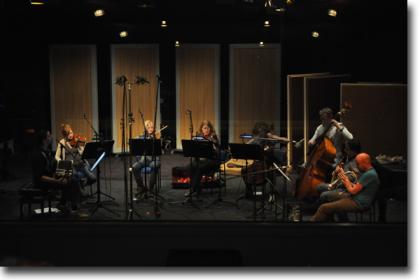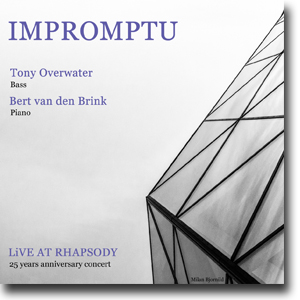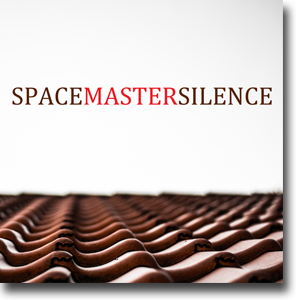The 12 pieces of music were performed live in the studio in front of a studio audience. The musicians were placed in front of a stereo pair of microphones with additional spot microphones on each instrument. The musicians were playing without headphones, the reason being that we believe that when we get the musicians to play together in the same room,with out headphones, it creates a number of musical and technical benefits:
As they are not ''separated'' by the headphones, the musicians, in order to hear each other are forced to create a natural and musical balance, a balance which is then easily captured by the main stereo pair of microphones. Because of the natural and musical balance the need for compression to control levels is no longer necessary, and since everybody is in the same room,the boxed sound which is so common in many modern recordings is absent, and the sound of the room helps ''glue'' the sound of the recording.
This is all very well but there are also problematic aspects to this procedure:
The room, studio, has to have a good sound. The musicians have to be very good and well prepared as it is very difficult to repair mistakes because of the ''cross talk'' between the instruments, we have to be very precise when choosing and placing the microphones and the puzzle of placing the musicians at the right distance to the main stereo microphones and the right distance to each other, is also time consuming. And when we have a live audience in the studio, we pray that they remember to turn of their cell phones and the ones with a bad cold choose to stay at home. The room where the recordings has been done is the now legendary Studio Eleven situated in the the building of the Dutch World Broad Casting Service. The Studio was used extensively in the 60's by European and visiting American jazz musicians (Wes Montgomery, Cannonball Adderley,Dexter Gordon,Eric Dolphy.....) The Dutch World Broad Casting Service asked Frans de Rond to bring the room back to life as a recording studio, and Frans after seeing and hearing the room jumped at the opportunity. Sound Liaison has been allowed to use the room for our audiophile projects and we are eternally greatfull to the Dutch World Service for the opportunity.
Recorded in Studio Eleven (Hilversum) with a live audience on September 15, 2012.
This recording was made by Sound Liaison for and with lovers of high-end audio recordings.
The file is a one to one copy of the master file (96kHz/24bit).
Used equipment:
Microphones:
Carmen: Audix SCX25
Folker: Audio Technica 4080
Peter: JZ V67
Marcel: SE Rn17 - overheads and JZ V67 - bassdrum
Main system - Schoeps MK5 (AB)
Micpre's: RME Micstacy (Analog > MADI)
Microphone cables: Grimm Audio TPR
Speakers: Grimm Audio LS1
Master clock: Grimm Audio CC1
Mixing headphones: AKG 702 / Sennheiser HD800


















